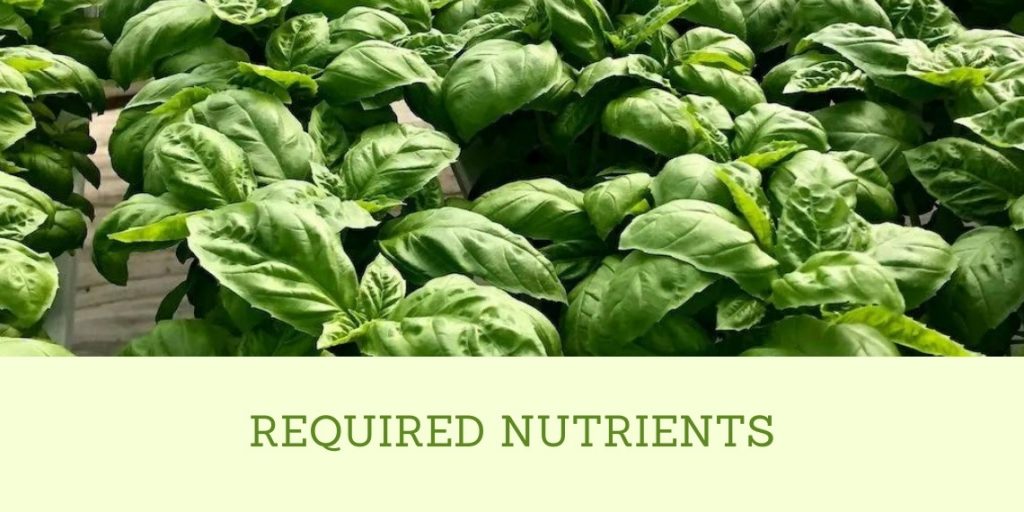Hydroponic methods are becoming increasingly popular for growing flavorful basil. The benefits of this technique include healthier plants, higher yields, and a dirt-free process, all with no need to worry about soil runoff or pests.
Homeowners, landscapers and farmers alike can grow their own basil plants at home with the help of hydroponic systems. It’s easy, affordable and sustainable. Check out this guide on how you can grow your own hydroponic basil at home with just water – no soil needed.
Different Types of Basil Plant
Grow basil in the healthiest way possible by growing it hydroponically. Basil plants come in varieties, and all can be grown hydroponically. Each variety differs from one another in features like flavor, yield strength, disease resistance, or growth rate for an optimum harvest time frame.
The different types of basil plants include:
- Lemon basil
- Lime basil
- Cinnamon basil
- Sweet basil
- Dark opal basil
- Purple ruffles basil
- Christmas basil
- Sweet Thai basil
- Holy basil
- Spicy bush basil
One of the first things you should do when choosing a basil plant for hydroponics is to make sure that it’s most appropriate for your system. Make inquiries about how much sunlight or water they need, as well as what kind will produce best in your environment.
However, if you want our favorite variety of basil to grow in your hydroponics setup, the bush and sweet variety is what you should go for. Both varieties grow well hydroponically.
How to Grow Hydroponic Basil
The initial step to growing your own basil hydroponically is deciding how you want to start. You could start by germinating the seeds, cloning the basil plants, or just buying some from nearby stores and then transplanting them into pots.
Seed Germination
Germinating seeds is quite easy for basil plants. To start the process of seed germination, you should keep your basil plants at about 75 degrees Fahrenheit and use a rapid-rooter plug. After about three to ten days, you will notice that the seeds are starting to germinate.
Cloning
To start germinating basil seeds, you can use the cloning method as well. All you need to do is find the right type of plant and make sure it has healthy growth with great traits in order for them all to have similar features after they grow up.
Buy and Transplant Basil
One other way is by purchasing the basil plants from nearby garden stores and transplanting them into the hydroponic setup.
Planting Hydroponic Basil

Every hydroponics system will work with growing basil plants, but some are better suited and work better than others.
Do keep in mind to provide your basil plants at least 6-12 inches of space. This is to encourage air circulation and avoid fungal growth in between watering schedules as well.
For best results, you should trim your basil plant above the lateral buds for growth stimulation. Trimming your basil plants whenever they are full will increase their yield.
Furthermore, make sure that you’re using sharp tools to trim and also remember not to pinch off any new growth tips on the stem. The best part is, they’re not wasted. You can easily create a delicious meal with trimmed portions.
Required Temperature for Hydroponic Basil
Hydroponic basil requires a temperature ranging between 65-80 degrees Fahrenheit with humidity levels between 40% and 60% for optimal growth.
Required Light
The hydroponic basil plant thrives under moderate light. To ensure optimal growth, provide your plants with 13-16 hours of light each day. This allows them the necessary amount of time for photosynthesis and cellular repair while not overheating or drying out too much in high temperatures.
Required pH Level
The ideal pH level for hydroponic basil plants should range between 5.5 and 6.5.
Required Nutrients

The required nutrients for your hydroponics basil plants are quite simple as it is only to support their vegetative stage. Hence, a vegetative nutrients solution is all that you need.
To get the most from your basil plants, you should supply them with a nitrogen-enriched nutrient scheme. You can add a little bit of magnesium and calcium as well if desired.
Harvesting Hydroponic Basil
Harvesting your plants is a really exciting part of gardening. You can either harvest all the basil plants or simply take off individual stalks for use in cooking and enjoy that juicy flavor.
To extend the life of your basil plants, store them in a vented bag at 55-60 degrees. This will ensure that they stay fresh for about 10 to 12 days. You should also avoid putting your basil inside a cooler because this may cause damage.
Instead, it is recommended to store them in an open jar filled with water and place it in a cool room. This will prevent the plants from drying out and dying.
The Bottom Line
Have you always wanted to grow your own fresh basil? Now is the time!
Hydroponic gardening is a great way to grow your own produce without the risks associated with traditional soil-based methods. Growing hydroponic basil plants has never been easier, and you will be rewarded with great benefits from your efforts.
Choose from an array of varieties, and you’ll be sure that all will do well, giving delicious flavor throughout their growth cycle. You’ll have delicious, nutrient-packed leaves on the table faster than ever before.
You’ll be able to successfully grow your basil plants hydroponically so long as you follow the instructions stated above. Provide them with the right nutrients and other requirements, and they will flourish.
Hopefully, with the help of this guide, you can now grow your own hydroponic basil plants and have plenty of delicious fresh herbs in no time.


